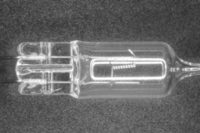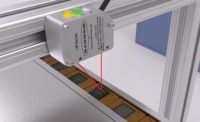How To Choose Inspection Software

1. Most important. Can the software handle all the parts that you are currently manufacturing or that you are likely to want to make in the future?
This sounds so obvious that it appears to be a stupid question. However, alongside the move from drawing-based inspection to inspection based on CAD, there is an increasing move to more complex components. Partly, this is a result of designers looking to incorporate more aesthetic and more aerodynamic shapes into their designs. Compare any car facia or domestic electrical device from today with those from ten years ago for examples of this trend. In addition, designers are looking to reduce assembly costs by combining a number of individual parts into a single component and to pack parts more closely in products like mobile phones. All this means that there is an increasing need to inspect complex surfaces as well as key dimensions. Finally, packages are now available that allow GD&T data to be incorporated within the CAD files, which will further limit the amount of drawings that are issued. Clearly, any software must, therefore, be able to undertake inspection based on both drawings and CAD files.2. Can it work on all your inspection devices?
Few companies can afford to standardise on a single device for all its inspection needs. Apart from the difficulty of finding one piece of equipment that will meet all its requirements, most companies have a range of different devices, including conventional CMMs, portable arms, lasers and even machine tools incorporating inspection probes, that have been purchased at various stages in their development. The ideal situation must be to use a common software on all these different devices. The benefits include reduced training needs, since all staff can be trained on the same software, more flexibility as it makes it easier for any one member of staff to use all the company’s inspection equipment and easier comparison of results since the results from the different devices can all be produced in the same format.3. Can it accept data in a variety of formats?
Most companies need more than one key customer and the different companies may use different design systems. In order to be able to accept work from all these various sources, the inspection software must be able to accept data from all the main design systems and also from recognised standards, like IGES and STEP. The software must be able to read the different file formats quickly and accurately or the whole process will be delayed.4. Can the software produce understandable reports?
Collecting data is only one part of any inspection process. Arranging the results in a form that can be easily understood is even more important. Quality was once only the preserve of the accredited inspector. Now, everyone in the company needs to be aware of the quality levels that are being achieved before much can be done to improve any weaknesses. Even more important, the more quickly the customer can be convinced that the required standards have been met, the faster he will approve the invoice for payment.5. Is the software easy to use?
Alongside the need for a greater number of people to be able to understand the results, as companies move towards total quality management, there is a growing requirement for more people to collect inspection data. Many of these extra people will be machine operators, rather than inspection specialists so software is needed to can be learned easily and operated quickly by these less-skilled staff. In many cases, companies are moving to a system where the former inspector or quality manager becomes responsible for deciding which are the measurements that need to be taken and developing the inspection routine. The actual measurements are then undertaken on the factory floor, using some of the growing number of portable inspection devices that are now available. As well as increasing the amount of inspection that can be undertaken, moving measurement to the shop floor means that there are shorter delays between any errors being made and them being discovered. Inspection at a distance from production inevitably means a time lag, which can mean that machines spend hours, if not days, continuing to produce parts that are out of specification, with the attendant waste of materials and time.
6. Will the supplier be able to offer good training and support?
Even though most modern inspection software is easier to use than earlier systems, users still need good training to get the most out of their program. Similarly, there will be times when users need help in obtaining the best results, normally just when a job is at a critical stage. Without these support services, even the best software in the world will not give the results of which it is capable and the company will not see the optimum return on its investment in its inspection equipment. With manufacturing becoming more global, it is also important that the supplier can support the software in a number of countries, to ensure that a common measuring system and a common style of reporting can be used both within the company and along the supply chain.
7. Will the software be upgraded at regular intervals?
Despite the best efforts of the programmers, every piece of software in the world will contain a small number of bugs. Inspection systems are no exception. Regular upgrades ensure that these problems can be fixed quickly. In addition, inspection software must be constantly developed to keep up with the rapid changes in measuring equipment.8. How much will it cost?
While the company accountant will think that this should be the most important factor to be considered, cost should always be the last thing to be taken into account. After all, no matter how cheap it is, the investment will be wasted if the system cannot read the customer’s CAD files, if it is not compatible with the inspection equipment or if it cannot be used quickly and easily by all the staff that need to take measurements. It is also important to consider all the costs for maintenance, upgrades and support as well as the initial purchase cost.
Philip Hewitt
Production Manager,
PowerINSPECT
marketing@delcam.com
1-877-DELCAM-1
Delcam
3280 Electricity Drive
Windsor, ON N8W 5J1
www.delcam.com
Looking for a reprint of this article?
From high-res PDFs to custom plaques, order your copy today!




